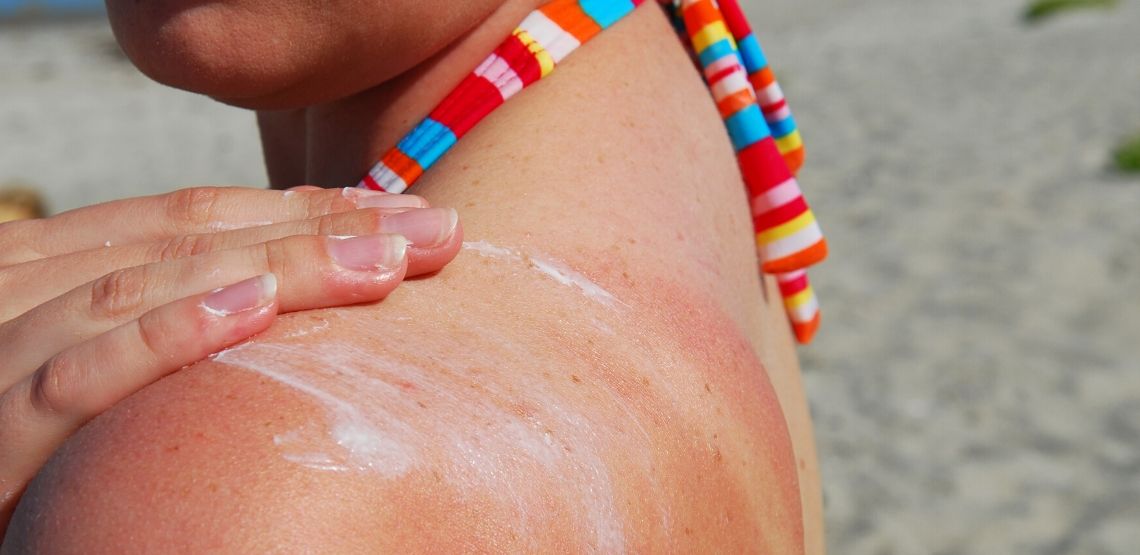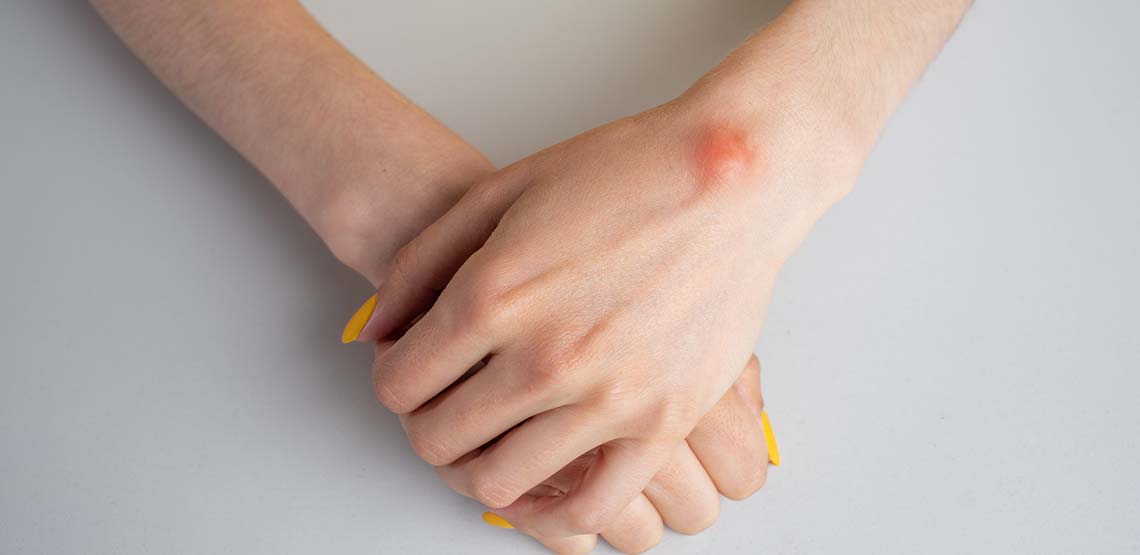How to Treat Sunburn
Treating a sunburn correctly is very important for your skin’s health. Spending time outdoors can be very fulfilling, but also comes with the threat of getting sunburned if you do not take precautions. Here is how to treat a sunburn.
What Is Sunburn?
A sunburn is actually a type of radiation burn that your skin gets from being exposed to UV radiation from the sun. Both UVA and UVB rays from the sun can penetrate the skin and cause damage.
The amount of UVA and UVB rays differ from place to place, as well as changing with the weather. For example, the UVA levels in countries like Australia and South Africa can be significantly higher than those in Scandinavian countries.
Sunburn is an inflammatory reaction of the skin’s outer layers when exposed to too much UVA and UVB. In severe cases it can even lead to a blistering and peeling of the skin. When your skin peels after getting a sunburn, it is your body’s way to try and get rid of the damaged cells. Extreme sunburn may even require hospital care and your body could go into shock.
The Role of Melanin in Sunburn
The melanin in skin is the pigment that gives skin its color and defends it against the sun’s rays. It darkens skin that is unprotected.
The amount of melanin your skin produces is determined by your genetics. The less melanin you have in your skin (how lighter your skin is), the likelier you are to get a sunburn even in a short amount of time. It should be kept in mind that your cells are also damaged when you tan.
However, when you do get a sunburn, it is important to know how to treat the burn depending on how severe it is.
How Long Does It Take for Your Skin to Burn?
Sunburn can happen very fast, even in less than 15 minutes. However, the damage done is not immediately visible. After being exposed to the sun, skin may become red in as little as half an hour, although it generally takes two to six hours.
The pain from the sunburn is also not felt immediately, but in most extreme cases it is felt within six to 48 hours after the initial exposure. The sunburn itself develops over a period of 24 to 72 hours, with skin peeling in three to eight days after the sunburn occurred.
Related Search Topics (Ads)
How to Treat Sunburn at Home
If your sunburn is not very serious and you either
have discomfort, little redness and no blisters, you can treat the sunburn at home. Here are some helpful tips.
Stay Hydrated
To make sure you stay hydrated, drink plenty of water and other fluids. Avoid drinks containing caffeine (like coffee, tea and energy drinks), as this could only dehydrate you more.
Take Cool Baths or Showers
Cool baths and showers will help to relieve the pain and discomfort of the sunburn. When you get out of the bath or shower, pat yourself almost dry (do not rub across the sunburned skin) and then apply a moisturizer to help trap the water in your skin. This may also ease the pain, discomfort and dryness.
Use Balms or Moisturizers
Balms, creams and moisturizers that contain aloe vera, menthol, camphor or soy will help to soothe sunburned skin. Put the moisturizer balm in the fridge to cool it. The cooled moisturizer will help to cool your skin and soothe the sunburn even more. Hydrocortisone cream is also a good option.
However, do not use products that end in “caine” (for example, benzocaine), as these may irritate the skin or even cause an allergic reaction.
Use Ibuprofen
Drugs like ibuprofen can relieve swelling and pain caused by sunburn. Aspirin can also help to reduce the discomfort. If you are unsure what to take, ask a pharmacist.
Avoid the Sun
It is very important to stay out of the sun while your sunburn heals as this will keep you from getting a worse sunburn and damaging your skin even more.
Allow Blisters to Heal
If you have blisters from a sunburn, it means you have a second-degree sunburn. Do not pop the blisters, as they form to help your skin heal. The blisters also protect you from infection.
If you have a severe or extensive sunburn, you may find that you have other symptoms as well and may need to see a health care professional to treat the sunburn.
When to Seek Medical Help
If a sunburn is severe or extreme, medical help or even a stay in hospital may be necessary. Get medical help if:
- Sunburn blisters cover more than 20% of the body
- You have a fever of 102F or higher
- You have chills
- There is severe pain
- Nausea and vomiting
- Weakness
- You have a dry mouth, stay thirsty, have reduce urination, dizziness or fatigue. These symptoms are also all signs of dehydration.
In extreme cases, shock symptoms may also occur, including:
- Low blood pressure
- Fainting
- Extreme weakness
How to Protect Yourself Against Sunburn
It is always a good habit to protect yourself against sunburn, even when it is overcast, as the damaging rays from the sun can still penetrate through the clouds and damage your skin. Here are steps you can take to keep from getting a sunburn:
- Always wear sunblock. Reapply the sunblock regularly (at least every two hours) and after you have been in the water. Opt for an SPF of 30 or higher. Make sure your sunscreen protects against both UVA and UVB.
- Stay out of the sun during the hottest time of the day. This is around noon. This will minimize the amount of UVA and UVB rays you are exposed to.
- Stay in the shade as much as possible.
- Wear a wide-brimmed hat and protect your eyes with sunglasses.


